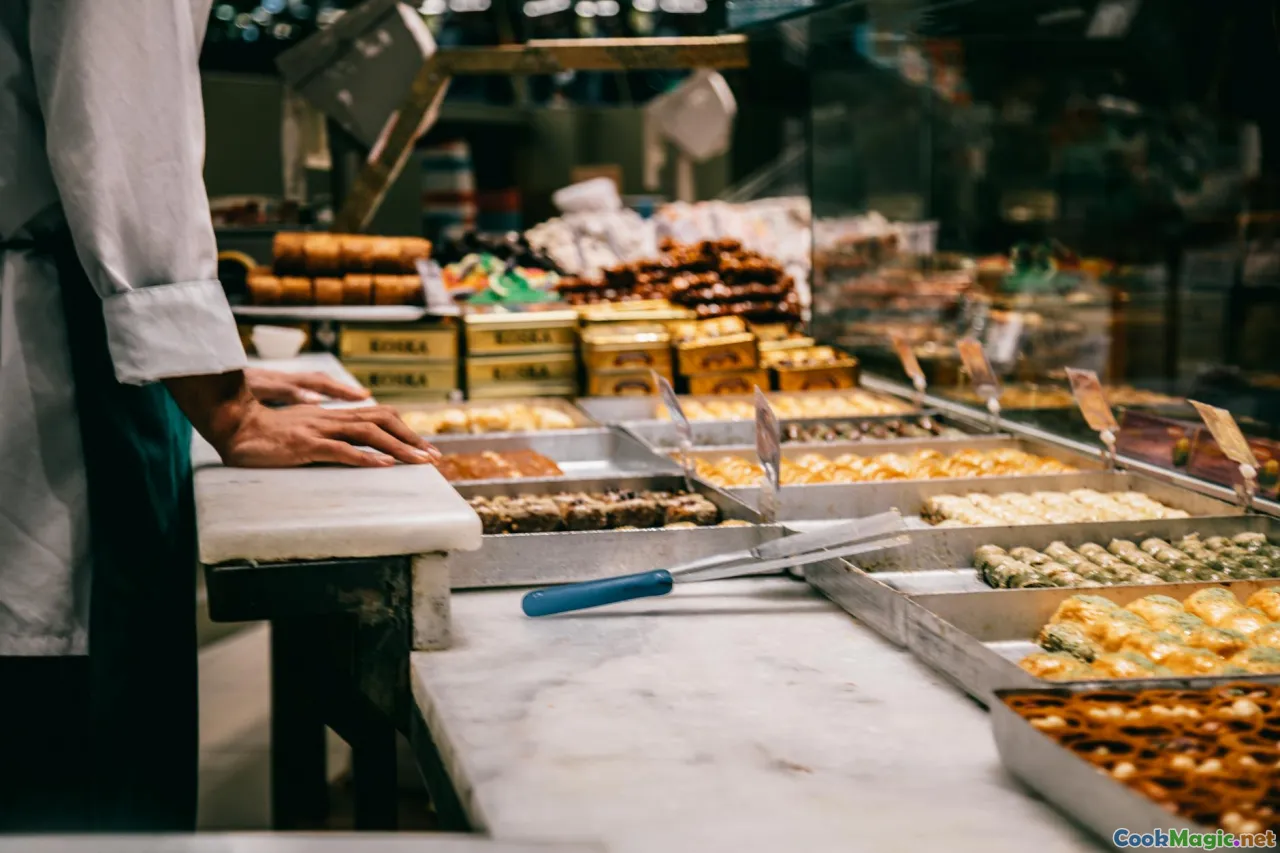Sweet Traditions in Albania
8 min read Discover the rich tapestry of Albanian sweet traditions, from ancient recipes to modern delights, that reflect the country's vibrant culture and history. April 22, 2025 15:00
Sweet Traditions in Albania
Albania, a land of rugged mountains, ancient ruins, and vibrant cultural tapestries, is also a treasure trove of sweet traditions that echo its history, geography, and soul. While much focus is often given to its savory dishes and hearty breads, the sweet side of Albanian cuisine reveals a world of delicate, aromatic, and often surprisingly intricate confections that have been passed down through generations.
An Introduction to Albanian Sweetness: More Than Just Sugar
Imagine walking through the cobbled streets of Berat or the bustling markets of Tirana, where the aroma of roasted nuts, honey, and warm spices fills the air. Albanian sweets are not merely desserts; they are expressions of love, community, and cultural identity. From the simple yet profound taste of honey-drizzled baklava to the complex textures of traditional pastries, each sweet tells a story.
In Albania, sweets are woven into the fabric of daily life and special occasions alike. Celebrations, religious festivals, and family gatherings are incomplete without a platter of colorful, fragrant confections that symbolize prosperity and good fortune.
Historical Roots of Albanian Sweets
The sweet traditions of Albania are deeply rooted in the country’s history, influenced by Byzantine, Ottoman, and Balkan neighbors. The Ottoman Empire, in particular, left a lasting mark on the culinary landscape, introducing ingredients like honey, nuts, and phyllo dough—elements that form the backbone of many Albanian desserts.
Ancient recipes, often passed orally from mothers to daughters, have preserved the essence of these influences while adapting to local ingredients and tastes. For example, the use of local walnuts, chestnuts, and wild herbs adds a unique Albanian twist to classical Ottoman sweets.
Iconic Albanian Sweets: A Kaleidoscope of Flavors
1. Baklava and Its Albanian Variants
Perhaps the most internationally recognized Albanian sweet, baklava in Albania is a layered masterpiece. Thin sheets of phyllo are brushed with butter, then layered with a mixture of crushed walnuts, almonds, and sometimes pistachios. Once baked to golden perfection, it is drenched in fragrant honey syrup infused with lemon and cinnamon.
Albanian baklava differs from its Greek or Turkish counterparts by often incorporating local nuts and spices, giving it a distinct aroma and flavor profile. The texture is irresistibly crispy, with the sweet, sticky honey balancing the crunch.
2. Qumështorja (Milk Cake)
A lesser-known but equally beloved treat, Qumështorja is a soft, sweet cheese-based cake flavored with rosewater or orange blossom. Its silky texture and delicate sweetness make it a favorite during religious festivals and family celebrations.
3. Tullumba (Fried Sweet Pastry)
Originating from Ottoman influences, Tullumba are deep-fried dough balls soaked in honey syrup. Crispy on the outside, tender inside, they burst with a sweet, fragrant taste of saffron and cardamom.
4. Rushit (Honey Cookies)
These small, crumbly cookies are flavored with local honey and flavored with lemon zest or cinnamon. Often shaped into stars or simple rounds, they are a staple during Christmas and New Year festivities.
5. Kadaif (Shredded Wheat Dessert)
Made from shredded phyllo dough, Kadaif is layered with nuts and soaked in syrup, creating a melt-in-the-mouth experience that is both rich and satisfying.
The Art of Preparing Albanian Sweets
Preparing these sweets is an art form, often involving meticulous techniques passed down through generations. The use of fresh, local ingredients—honey from mountain beekeepers, walnuts harvested from Albanian orchards, and fragrant spices—elevates these desserts beyond mere sugar.
For instance, the honey used in Albanian sweets is traditionally raw and unfiltered, harvested from local beekeepers who tend hives amidst wild herbs and flowering meadows. This honey imparts a depth of flavor unmatched by commercial varieties.
The process of making phyllo dough, although simplified today, still requires patience and skill. Many families keep ancient rolling pins and pastry brushes, cherishing the tactile connection to their culinary heritage.
Celebrating Sweetness: Festivals and Traditions
Albania’s calendar is dotted with festivals where sweets play a starring role. During the Dita e Verës (Summer Day), families gather to share homemade desserts, exchanging recipes and stories.
Religious holidays like EidandChristmas feature special sweets, often prepared weeks in advance. It is customary to offer sweets to guests as a sign of hospitality and goodwill.
In rural areas, it is common for women to gather during harvest season to prepare large batches of honey-based treats, reinforcing community bonds.
Personal Reflections and Cultural Significance
Having visited Albania multiple times, I have been struck by the warmth and pride Albanians take in their sweet traditions. One memorable experience was sitting with a grandmother in a mountain village, watching her carefully layer walnuts and honey into delicate pastries while sharing stories of her childhood. The aroma of baking filled the air, blending with the scent of pine forests outside.
These sweets are more than just food; they are symbols of hospitality, resilience, and the enduring spirit of Albanian culture. Each bite transports you to a world where history, nature, and community intertwine.
Final Thoughts: Embracing Albanian Sweetness
Exploring Albania’s sweet traditions offers a window into its soul—a land where hospitality and history are tasted in every crumb and honey drop. Whether you are savoring a piece of baklava at a local festival or trying your hand at making Tullumba, these sweets invite you to experience Albania’s rich cultural tapestry.
So next time you seek a new culinary adventure, consider delving into the sweet side of the Balkans. You might find that the most memorable desserts are not just about sugar, but about stories, heritage, and the warmth of shared traditions.
Embark on this delicious journey and let Albanian sweets enchant your senses.









